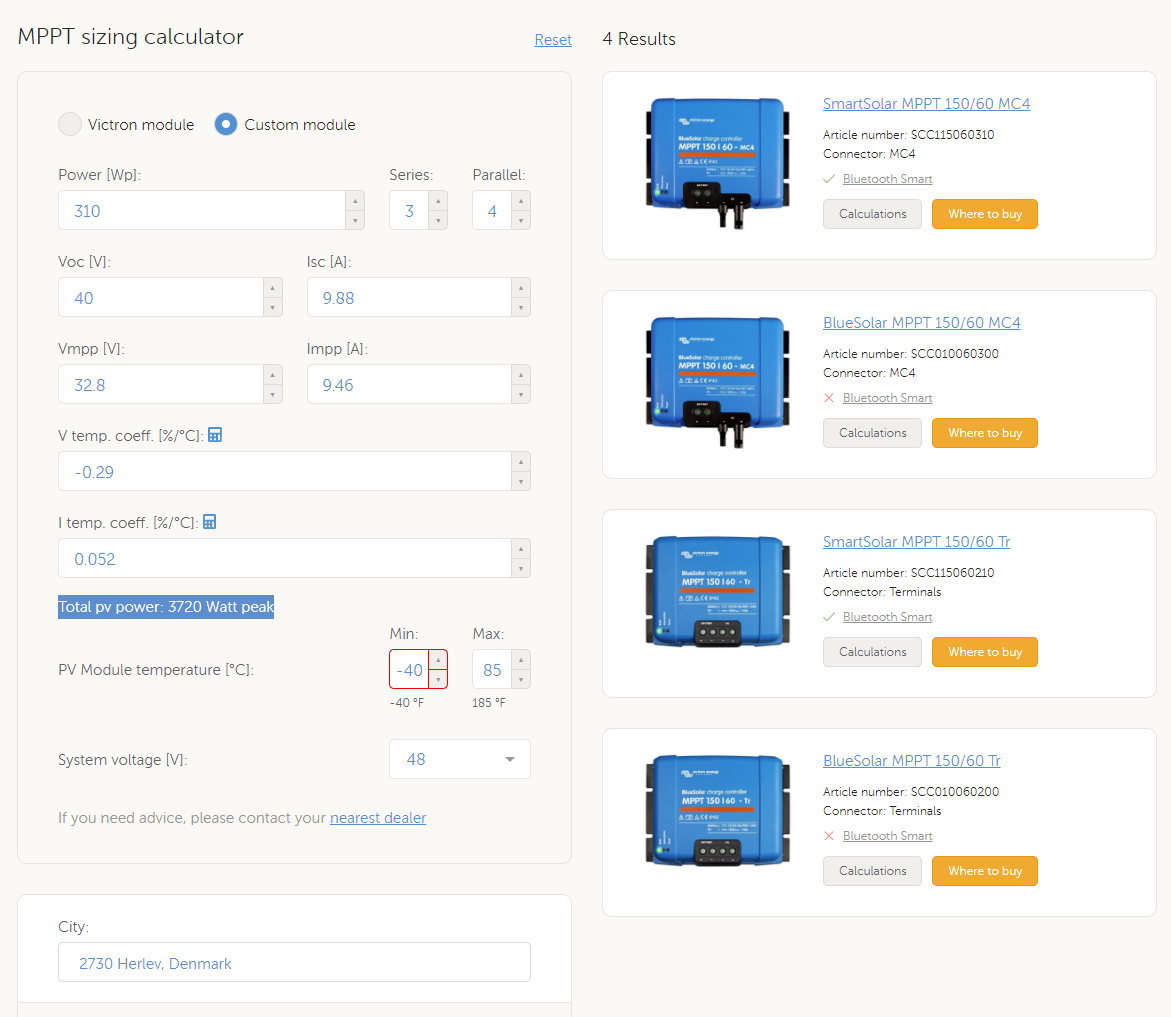Hi,
I have 3x4 and 3x3 constellation of the attached panels. I have tried to use the calculator and i am wondering why it's suggesting 150/60 for my 3x4 side when the datasheet states Nominal PV power, 48V = 3440W and i have Total PV Power : 3720W and then the same on the 3x3 side where i have total PV power 2790W and the datasheet states 2600W, i am sure i am misunderstanding something but what is it ?
Amerisolar-AS-6M30-PERC-Black-Module-1640x992x40mm-Eng.pdf

The next question is about MC4 vs without . As far as i can see all MC4 connectors are rated at 30A. My 3x4 side will be 40A since each series is of 10A and the 3x3 side will be 30A. Does that mean that if i buy a 150/60 MC4 i can't use it with 40A with the MC4 ? If so why then make it at all ?
I should mention that i will run a 48V system (16S of LiFePo4 Batteries)
Best regards,
Peter

